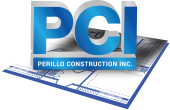The architect is the first piece of the puzzle when it comes to designing and executing a successful commercial build out. You explain your goals to the architect, who is then responsible for creating a set of precisely drawn plans. These plans are passed off to the general contractor. From there, the GC is tasked with bidding out all aspects of the project in order to bring the drawings to life. During this process, the architect and GC work together in order to finalize the drawings and ensure the project will remain in budget and fulfill all intended goals.
Once the original drawings are complete, it’s not uncommon for people to assume the architect is no longer a part of the project. In some cases, the architect is no longer involved, but for the best results it’s important that the architect continues to play some role in the project. That doesn’t mean they are on site every day, but instead are available as needed. Without help from your architect, it’s very easy for plans to be misinterpreted and mistakes to arise. These mistakes have the potential to harm the final outcome of your project.
There are a number of roles the architect fulfills throughout the design and build out process, including:
#1. Providing Clarification To Contractors
The work an architect contributes throughout the construction of an interior office build out is referred to as CA (Construction Administration or Contract Administration). This phase of the build out process allows the architect to provide any clarification about the overall design specifications by responding to RFIs (Request For Information).
The builder usually submits the RFI to the architect whenever something is unclear or contractors require additional information. A third party agency, such as a fire department, may also require further specifications in order to ensure the project is in line with local building codes and regulations.
#2. Maintaining Your Original Vision
Many projects split up the design and construction process, keeping them independent from one another. The owner of the property or business may work with the architect first and then with the contractor. Many tasks overlap and are overlooked as a result of this methodology.
Once a lot of contractors become involved, your original vision is at risk for getting changed around. If the architect is still involved with the project, they are able to advocate for you in order to keep your project on track in regards to your original vision. Your architect, along with your GC, is in charge of keeping all subcontractors in line and following the original plan of action.
#3. Addressing Any Changes Along The Way
During the construction process, it’s common for necessary changes to arise. You might think your original plans are set in stone, but the only thing you can always expect is the unexpected. You never know what you’ll run into during the construction process, and a good architect can help you go with the flow and make changes as needed.
The architect is responsible for evaluating and designing changes in order to ensure they flow with the original plans and are safe and suitable for implementation. They can also help cut corners if you are running out of budget. For instance, they can alter the types of materials originally planned for in order to produce the same effect for less money.
#4. Reviewing Shop Drawings
Different trade contractors hired by the GC will create and submit drawings of their own. These drawings are based off of the architect’s basic design, but include more details in regards to how they will construct the work. As long as your architect is still involved in the project, they will look over these plans to ensure they are in line with the original design. They can also look over and approve mockups and samples.
#5. Take Care Of Any Additional Architect Contracted Responsibilities
The contracted agreement between the owner and the architect outlines all of the architect’s responsibilities throughout a project. Look over these carefully to ensure that they fall in line with your expectations and needs.
The American Institute of Architects (AIA) outlines standard contracts designed in regards to different project types. The base contract used between owner and architect is generally the B-201, but there are other variants.
You can trust PCI to work with your architect, or one of our hand picked architects, to deliver the highest quality results every single time. Contact us today to learn more.

